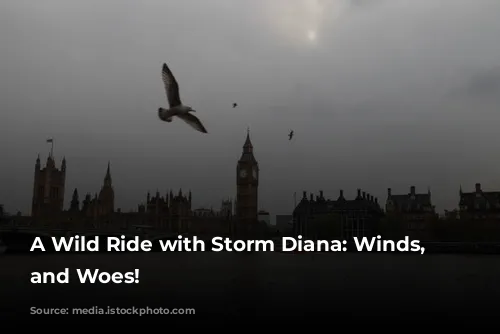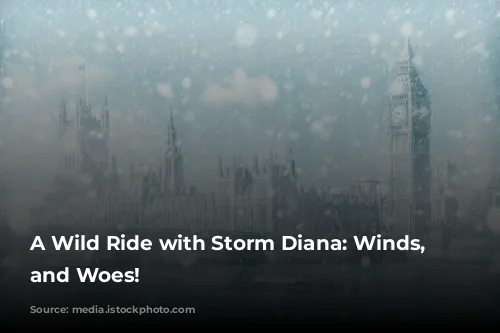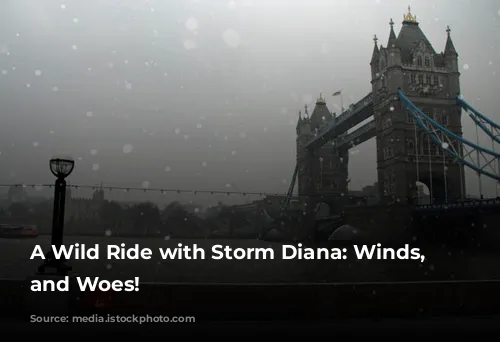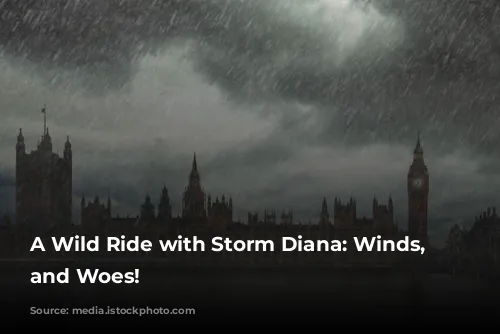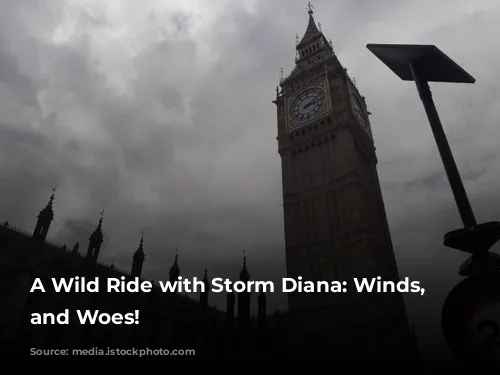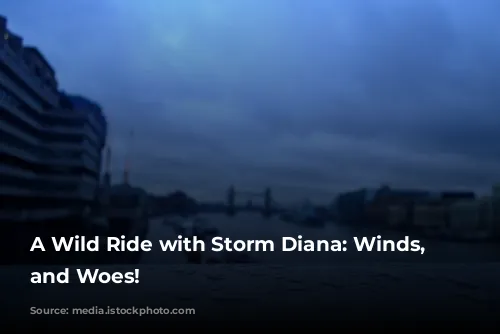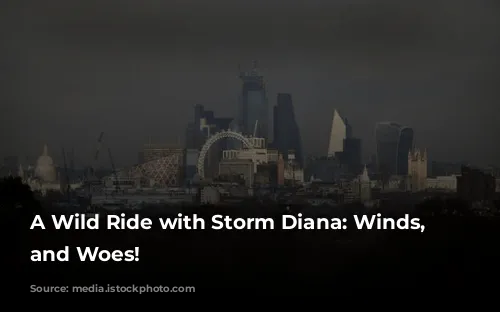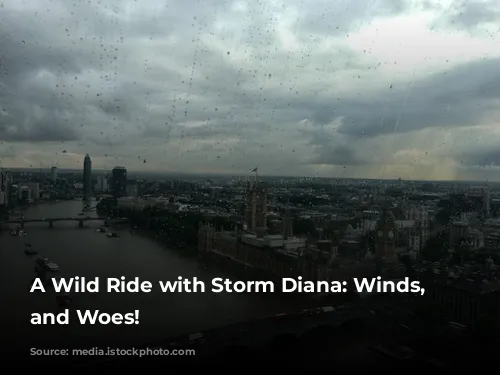Get ready for a wild tale! Storm Diana whipped across the British Isles, leaving a trail of destruction in its wake. High winds, exceeding 80 mph, tore down trees, flooded roads, and disrupted travel across the country. Trains were cancelled, flights delayed, and ferries tossed about in the tumultuous seas. More than 40,000 homes were plunged into darkness, while impassable roads added to the chaos. The storm’s fury extended to coastal areas, where towering waves crashed onto promenades, forcing authorities to warn people to stay away from the dangerous shorelines.

A Storm of Disruption: From the North to the South
The storm’s impact was felt far and wide, from the northernmost reaches of Scotland to the south coast of England. A major incident was declared in Hull as gale-force winds brought down a floodlight at a rugby stadium. Down south, Lyme Regis in Dorset bore the brunt of the storm’s wrath with waves reaching heights of houses! London’s commuters were left battling umbrella-crushing winds, while ferry passengers on the English Channel endured stomach-churning crossings. The storm’s fury extended even further, reaching as far as the Isle of Wight where winds reached a blustering 82 mph.

A Call for Caution: The Risks of a Raging Storm
With the storm’s arrival, authorities issued a stark warning: beware the dangers! Emergency speed restrictions were placed on train lines between London and Crewe, as fallen trees posed a grave threat to trains. The NFCC, the Nation Fire Chiefs Council, expressed concern about the risks posed by floodwater. “Unfortunately, fire and rescue services are often called to incidents where people have just underestimated the risks posed by flood water,” Dawn Whittaker, the NFCC’s water safety lead, explained. “Floods can quickly turn into life-threatening situations so NFCC asks that people listen to advice and avoid entering flood water whether on foot or in a vehicle.”
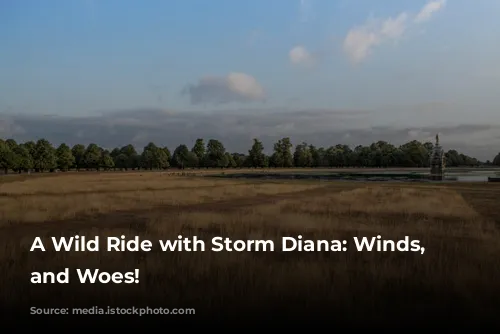
A Tale of Two Storms: Diana Joins a Powerful Trio
This wasn’t the first time a storm had wreaked havoc on the British Isles. In fact, Storm Diana is the fourth named storm to batter the country this autumn and winter. Earlier storms, Ali and Bronagh, brought similar travel chaos and widespread damage in September, while Storm Callum, in October, claimed the lives of three people. Storm Diana’s arrival comes as a stark reminder of the power of nature and the need for caution during such events.
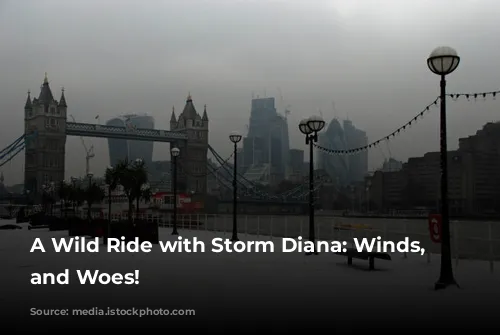
From Heroism to Recklessness: A Sea Rescue and a Social Media Outcry
The storm’s fury also brought out the best and worst in people. In one harrowing incident, an RNLI lifeboat crew braved the raging seas to rescue a swimmer who had ventured into the water wearing only shorts and goggles. This reckless act was met with outrage on social media, with many criticizing the swimmer’s lack of common sense and irresponsibility. While praising the RNLI crew’s bravery, many voiced concerns about the dangers of storm selfies and the potential for thoughtless behavior to cost lives.

The Aftermath of the Storm: A Sobering Reminder of Nature’s Power
As Storm Diana moves on, leaving behind a trail of disruption and damage, it serves as a stark reminder of the power of nature. It’s a time for reflection, not just about the damage and disruption caused by the storm but also about our own responsibility to heed warnings and stay safe during such events. From the strength of the winds to the height of the waves, Storm Diana has certainly made its mark on the British Isles, leaving a lasting impression on those who witnessed its fury.
